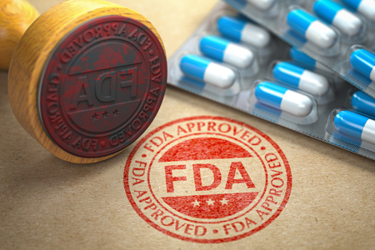GDUFA And Facility Readiness: A New Era for Generic Drug Approvals
By Ravali Patlolla, Freyr Solutions

The Generic Drug User Fee Amendments (GDUFA) program has been a cornerstone of the FDA's efforts to ensure timely access to safe, effective, high-quality generic drugs for patients. Since its inception in 2012, GDUFA has undergone two reauthorizations, with the most recent being GDUFA III for fiscal years 2023–2027. This latest revision introduces significant changes to the generic drug approval process, with particular emphasis on improving facility readiness and refining goal date assignments. These updates are designed to streamline the approval process further and enhance the availability of affordable generic medications.
Understanding Facility Readiness
Under GDUFA III, the concept of facility readiness has taken center stage in the goal date assignment process for ANDAs. The FDA now considers a facility ready for inspection when it meets the following criteria:
- cGMP Compliance: The facility must adhere to current good manufacturing practice (cGMP) requirements as outlined in section 501(a)(2)(B) of the FD&C Act and 21 CFR Parts 4, 210, and 211.1
- Consistency with Application Data: The facility's operations, methods, and product formulation must align with the descriptions provided in the ANDA. Moreover, the data at the facility must be complete, accurate, and consistent with the application.1
- Readiness for Commercial Manufacturing: The facility must demonstrate that it has a quality system designed to achieve sufficient control over commercial manufacturing operations for the product.1
Applicant Responsibilities And Form FDA 356h
The onus of ensuring and accurately reporting facility readiness falls squarely on the ANDA applicant. Key responsibilities of an ANDA applicant include:
- Pre-submission Assessment: Applicants must thoroughly evaluate each facility's readiness before ANDA submission.1
- Form FDA 356h: Applicants must check the appropriate "yes" or "no" box in Field 28 to indicate inspection readiness for each listed facility.1,2
Inaccurate representation of facility readiness may cause a delay in or refusal to approve an application.
Facility Notification
To prevent situations where facilities are unaware of their inclusion in an ANDA, applicants should inform each facility of its listing and readiness status on Form FDA 356h.1
It's worth noting that the FDA has experienced cases where facilities were unaware of their inclusion in an ANDA, often resulting in unpreparedness for inspection. To mitigate this, the agency recommends that applicants notify each facility of its listing and readiness status.1
If extenuating circumstances prevent a facility from being ready for inspection, applicants should indicate this on Form FDA 356h. The FDA considers it a good business practice for applicants to regularly communicate with manufacturing facilities, including contract manufacturing facilities, about changes in their inspection status to prevent any problems that may delay the approval of their application.6
Goal Date Assignment Process And Impact On ANDA Review And Approval
The FDA has implemented a nuanced approach to goal date assignment based on facility readiness:
- Standard Goal Date: Assigned when all facilities are ready for inspection.1
- 15-Month Goal Date: Applied when one or more facilities are not ready. FDA defers substantive assessment until an amendment certifies all facilities are ready.1,2
- Goal Date Reset: Upon receiving an amendment with updated Form FDA 356h certifying all facilities are ready, FDA reassigns the appropriate standard or priority goal date.1
- 30-Month Extended Goal Date: If no amendment is received 30 days before the 15-month goal date expiration, FDA resets the goal date to 30 months from the original ANDA submission.1,5
The goal date assignment process significantly impacts ANDA review and approval:
- The FDA now focuses resources on substantially complete applications with inspection-ready facilities.1
- Inaccurate representation of facility readiness may lead to delays or refusal to approve an application.1,2
- The 15-month deferral period allows applicants to address facility readiness issues without immediately affecting the application's review status.5
The implementation of GDUFA has had a significant impact on generic drug approvals:
- Over the five years of the first GDUFA program (fiscal years 2013–2017), FDA approved 2,700 new generic drugs, compared with 2,309 from fiscal 2008 through 2012, an increase of 16.9%.3 The increase in ANDA approvals during GDUFA was driven almost entirely by subsequent generics, which have less of an effect in driving down prices compared to first, second, and third generics.3
- Median approval times for ANDAs increased initially under GDUFA but began to trend downward in the program's final years.3
- Before GDUFA III, if any site was not ready for inspection, the agency would refuse to receive the application at the filing stage. Under GDUFA III, if any site is indicated as not ready for inspection, the goal date will be set at 15 months.7
Strategies For Pharmaceutical Companies
To navigate this new landscape effectively, pharmaceutical companies should check and ensure that the following elements are in place:
- Implement robust internal processes to assess and ensure facility readiness before ANDA submission.1
- Establish clear communication channels with all manufacturing facilities to confirm their readiness status.1
- Prepare for timely submission of amendments when facilities become ready, including clearly stating "Facility Ready For Inspection" in the cover letter.1
- When assessing facility readiness, use the considerations in FDA's Compliance Program 7346.832 Preapproval Inspections.1
- Familiarize yourself with the FDA's risk-based approach to assessing whether a preapproval inspection (PAI) is needed.4
Conclusion: The Future Of Generic Drug Approvals
The implementation of GDUFA III and its focus on facility readiness marks a significant shift in the generic drug approval landscape. While these changes aim to streamline the process and improve efficiency, they also present new challenges for pharmaceutical companies. The 15-month goal date for facilities not ready for inspection provides a grace period for companies to address readiness issues. However, it highlights the critical need for thorough preparation before submission. Furthermore, the FDA's commitment to reviewing and acting on 90% of ANDAs within 30 months of the original submission date (for those with extended goal dates) provides a clear timeline for companies to work toward.
Looking ahead, pharmaceutical companies must stay well informed about these evolving requirements and collaborate closely with regulatory experts to navigate this complex landscape successfully. As the process continues to be refined, we anticipate further improvements in the availability and affordability of generic drugs, ultimately benefiting patients and the broader healthcare system.
References:
- https://www.fda.gov/media/162018/download
- https://www.lachmanconsultants.com/2022/10/facility-not-ready-for-inspection-used-to-get-a-pass-but-not-anymore/
- https://www.pewtrusts.org/en/research-and-analysis/issue-briefs/2019/02/fda-approves-more-generic-drugs-but-competition-still-lags
- https://www.fda.gov/media/163643/download
- https://www.fda.gov/media/168929/download
- GFI - Good ANDA Submission Practices, https://www.fda.gov/media/110689/download
- Facility related updates in GDUFA III, https://www.fda.gov/media/168929/download
About The Author:
 Ravali Patlolla is a regulatory affairs manager for medicinal products at Freyr Solutions. She has 14+ years of experience in handling end-to-end regulatory submissions, including strategic guidance, gap analysis/assessment, authoring, and in-depth product understanding to help sponsors with timely submissions of INDs, NDAs, CTAs, IMPDs, MAAs, HA Meetings, ANDAs, supplements/ variations, and annual reports for innovator and generic pharmaceutical products to the U.S,, EU, and most of the world’s countries.
Ravali Patlolla is a regulatory affairs manager for medicinal products at Freyr Solutions. She has 14+ years of experience in handling end-to-end regulatory submissions, including strategic guidance, gap analysis/assessment, authoring, and in-depth product understanding to help sponsors with timely submissions of INDs, NDAs, CTAs, IMPDs, MAAs, HA Meetings, ANDAs, supplements/ variations, and annual reports for innovator and generic pharmaceutical products to the U.S,, EU, and most of the world’s countries.
